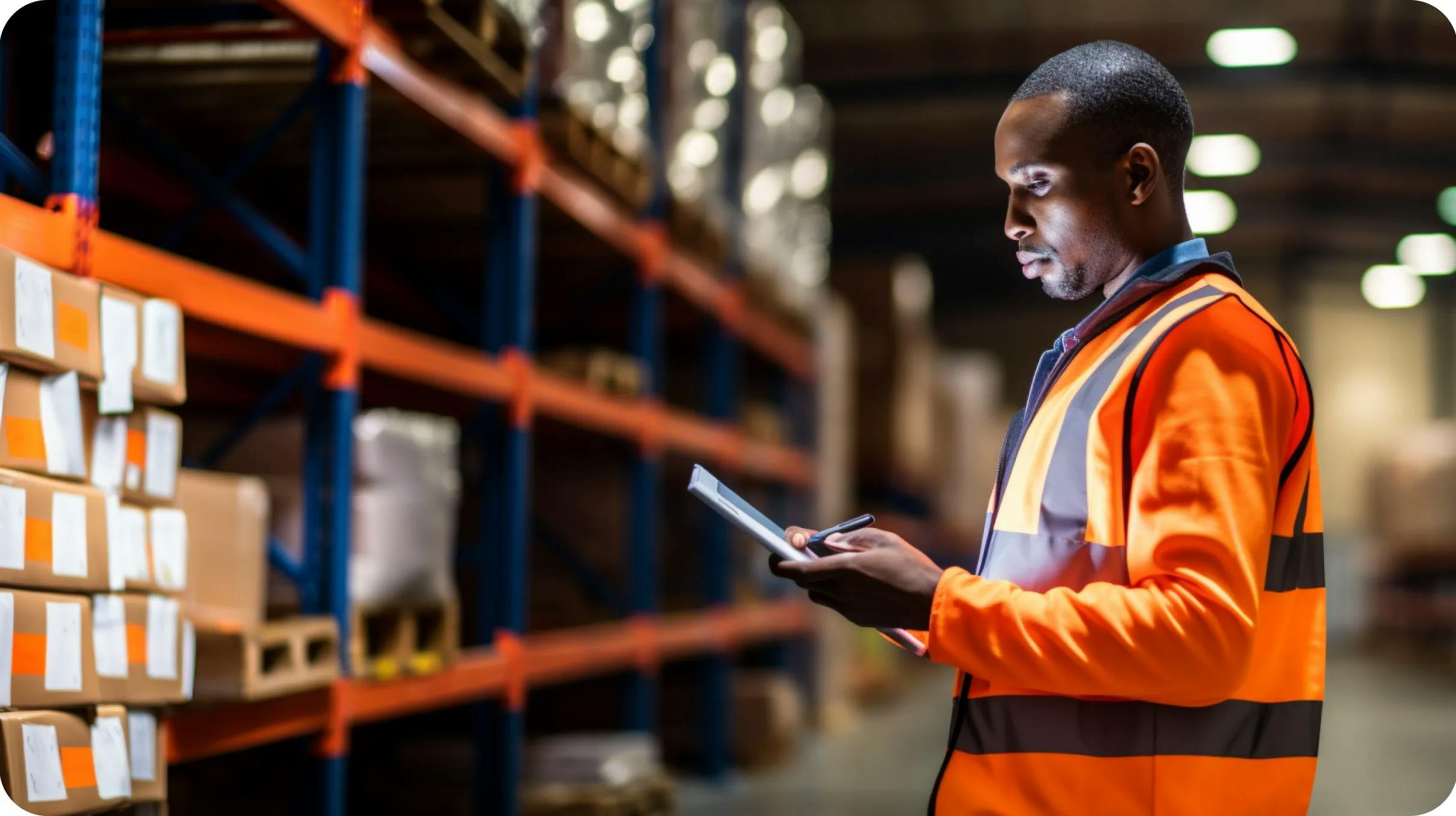Please note: This post contains affiliate links and we may receive a commission if you make a purchase using these links.
TABLE OF CONTENTS
Ecommerce has seen a huge upswing in 2020, with online sellers like Amazon experiencing a double-digit sales increase projected to surpass $302 billion in 2021. And while many more customers are now doing their shopping online, the practice of dropshipping has grown in popularity with many online sellers and ecommerce entrepreneurs. This streamlined sales method of getting products from suppliers to customers is seen by many as a low-risk, low-cost business with very little overhead.
What Is Dropshipping?
Dropshipping allows online sellers the option to forgo any involvement in the product manufacturing process; the maintenance or management of inventory; or the handling, fulfillment and shipping of a product to a customer.
Let's assume that you have an online store. Potential customers can visit your ecommerce website by finding your website either through a Google search or by using a social media platform like Facebook, YouTube, Twitter or Instagram. Say your customer is in search of an outdoor patio heater — perhaps it’s a restaurant owner who wants to provide outdoor seating options during the colder months of the year.
As an ecommerce seller who understands the potential sales value and demand for outdoor patio heating, you advertise that you have this product available on your website, even though you may not carry any actual patio heaters in your inventory. The customer can still buy this product on your website, while you work with a supplier or manufacturer of outdoor patio heaters to fulfill the order. This outsourced provider now acts as your de facto warehouse, where they also fulfill the order and deliver directly to your customer.
Throughout this process, you basically act as the middleman and profit on the sale by making the difference between the price the buyer paid and the price you negotiated with the manufacturer. Put simply: sell high...buy low. This may sound easy enough, but how does it actually work, and above all, how do you start a dropshipping business and make money through this selling method?
If You;re Interested in Starting Your Own Amazon Business. This Free Guide is For You.
Download NowMaking a Profit with Amazon Dropshipping
Succeeding as a dropshipper on Amazon will require you to sell the right product, fulfill orders in a timely manner and stay on top of customer service. Depending on what you sell and the sales margin, Amazon offers opportunities for third-party sellers to make a profit as long as they follow their rules and guidelines.
Being a dropshipper on Amazon can also benefit a seller by taking advantage of the Amazon brand and the fact that Amazon is the first place where millions of Americans go in search of products. However, navigating through the competition from first-party and Prime sellers can prove challenging. Another “no-no” from Amazon is that it has a strict list of what is restricted for sale, and it also does not allow purchasing from another online retailer, such as Walmart or Home Depot, and having those stores ship directly to your customer.
Making a profit as a dropshipper is possible and thousands of ecommerce entrepreneurs are utilizing this selling method through their own websites or through major online sellers such as Amazon. Jungle Scout, a platform for Amazon product research, recently released a survey of Amazon sellers. Survey respondents listed dropshipping as one of the most profitable Amazon business models, falling below private labeling, wholesale, online/retail arbitrage and handmade goods. While it can be difficult to get specific numbers related to dropshipping profits, the Jungle Scout report found that 74 percent of respondents earn more than $1,000 a month in sales (across all sales methods, not just dropshipping). About 39 percent make more than $10,000 a month.
Ultimately, your ability to make money with Amazon dropshipping all comes down to profit margins — how much you are purchasing the product for vs. how much you are selling it for. Jungle Scout reports that 67 percent of Amazon sellers have profit margins of more than 10 percent. But there is 8 percent that is not profitable at all.
Amazon Dropshipping Guide
If you're ready to start an Amazon dropshipping business, here a few of the first steps you need to take.
Finding the Right Suppliers
One way to succeed in dropshipping is to make a connection with a manufacturer and build a relationship with the supplier — especially if you anticipate volume business. Having a connection with a reliable manufacturer that carries an inventory of the products that you are selling can also help you avoid potential customer service issues. The main added benefit of this relationship is that you do not put any money down until after you make a sale on your online store. And again, manufacturing and shipping occur somewhere else.
Finding the right manufacturer can also help guarantee product quality assurance and helps avoid any potential negative customer experience.
Some of the supplier options most dropship sellers use include:
- Overseas manufacturers: This includes companies such as AliExpress, Banggood and Chinabrands. Since these companies are based in Asia, shipping can take anywhere between 4–6 weeks.
- Local manufacturers: This can include big-box retailers such as Walmart, Target or online sellers like Newegg. Many dropshippers look for the clearance items and offer those on their website at a marked-up cost. However, familiarize yourself with Amazon's dropshipping rules (found below), as you cannot ship directly from a retailer's website to your customer if the packaging comes with the store's logo and does not identify you as the seller.
- Local stores: Using local suppliers or manufacturers may require more “hustle” for a dropship seller. Let’s take the example of the outdoor patio heaters. If the dropshipper has a local source that has an inventory of heaters, the seller can go and purchase a bulk of these on-demand supplies and dropship to customers at a profit, perhaps even working a deal with the local store owner in an effort to improve the selling margins.
Selling on Amazon
Third-party sellers play a major role in Amazon sales. In the second quarter of 2020, third-party Amazon sellers accounted for 53 percent of all paid units. But unlike selling through your own website, selling as a dropshipper on Amazon comes with a number of rules and guidelines that need to be followed. If you want to become an Amazon seller, you will first need to set up a seller’s account. And above all, make sure you understand all of Amazon's rules and restrictions. Amazon has strict dropshipping policies and breaking them can result in cancellation of listings, forfeiture of payment and suspension of your seller's account. According to Amazon, you must:
- Be the seller of record of your products;
- Identify yourself as the seller of your products on all packing slips, invoices, external packaging, and other information included or provided in connection with them;
- Remove any packing slips, invoices, external packaging, or other information identifying a third-party drop shipper prior to shipping the order;
- Be responsible for accepting and processing customer returns of your products; and
- Comply with all other terms of your seller agreement and applicable Amazon policies.
If you anticipate selling a number of products, the best option is to create a professional account for a monthly fee of $39.99. This way you can sell an unlimited quantity for this flat fee, as opposed to paying $0.99 for each individual item sale. Signing up as an Amazon seller does not require you to have an LLC, but establishing a business entity can help enhance your credibility as a seller.
If you plan on dropshipping through Amazon, the next step is to decide if you want to be an Amazon FBA or FBM seller.
Amazon FBA vs. FBM
The difference between these two options is deciding whether you want your order fulfilled by Amazon or by you (or your supplier) — the merchant. For the FBA option — short for “Fulfillment by Amazon” — you find the product or products that you want to sell, order the inventory in advance of any sales and have the products shipped directly to Amazon where they fulfill and ship the orders to the Amazon customers. Amazon also handles customer support and returns.
Using Amazon’s FBM (Fulfillment by Merchant) option means that you (or a third party) are responsible for inventory storage and product shipping. Being an Amazon FBM seller means that you are charged fewer fees and set your own shipping rates, but on the negative side, you are not eligible for Prime shipping. Considering that Prime offers expedited shipping, this may put you at a disadvantage against FBA sellers. Depending on your customers, who by now have become used to expedited shipping, you may risk losing potential sales as a result of lagging delivery of goods.
Start Your Amazon Dropshipping Business with Bizee
If you are planning on starting a dropshipping business, you should also consider starting your business as an LLC entity. Having an LLC will help add credibility to your online store and business. It will also help provide limited liability coverage by protecting your personal assets should customers decide to sue. Forming a business entity such as an LLC also provides tax-benefits for business owners with pass-through taxation and flexible tax status.
Since 2004 Bizee has helped over 250,000 small business owners and entrepreneurs form and grow their businesses. Begin your path for success with your ecommerce business and form your LLC for $0 + state fee.
Please note: This post contains affiliate links and we may receive a commission if you make a purchase using these links.

Peter Mavrikis
Peter Mavrikis is an author and editor with over 25 years of experience in publishing. He has worked as the Editorial Director for Barron’s Educational Series, as well as Kaplan Test Prep, where he ran the test prep, foreign language, and study guide.
like what you’re reading?
Get Fresh Monthly Tips to Start & Grow Your LLC



